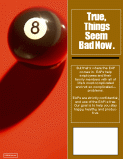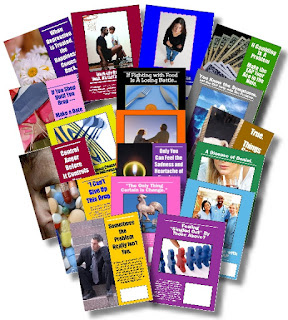The research is clear--better
empathetic communication and engagement with injured workers can reduce
workers' compensation costs associated with their recovery.
HR and EAPs should collaborate on this construct to get employees back to work sooner, reduce lawsuits, help prevent related employment claims, identify more troubled employees at risk of re-injury, and address secondary personal problems of injured workers that sabotage recovery.
This is not rocket science. Get excited, man! Follow 25 injured workers in 2018 and engage them in an "EAP Proactive Recovery Program." Then, compare your results--using 6-8 metrics--absences, treatment costs, re-injury rates, legal claims, reduced HR hassle time, speedier return to work, employee turnover, reduced overtime, etc.--to the same costs associated with the last 25 compensable injuries that were not similarly followed.
You should see a powerful return on this program. Then show up at an EAPA conference or share your results at a SHRM conference. Even better, attend a insurance or risk managers conference and promote employee assistance programs for the management tools they actually are, and should be, to help more workers and reduce costs. You might spark a needed true-to-the-spirit Core Technology EAP renaissance.
Here are a few ideas to consider for your project:
1. Consider having injured workers engage with the EAP. A self-referral, or even a formal referral after injury is appropriate because the referral is based upon a job-related issue--injury. Another source of referral for such a program is the workers' compensation managed care nurse--get this individual on board with the program.
You will discover this to be relatively easy because you are actually making their job easier and giving them improved stats. (I have done it, or I would not be writing about it.)
2. Have the EAP assess the psycho/social and environmental issues, and intervene with those that could contribute to a prolonged absence. This is a research-proven cost driver for WC injuries--the longer out, the less likely the return to work.
3. Institute EAP follow-up with medical doctors. They often have information helpful to a better EAP assessment.
4. Identify workers affected by depression and resolve employee concerns and complaints related to communications with the boss, HR, etc. (This reduces the likelihood of employees involving attorneys and suing the organization See: http://blog.reduceyourworkerscomp.com/2013/07/injured-workers-hire-attorneys-due-to-lack-of-employer-communication/)
5. Provide assertiveness training to help injured employees avoid peer pressure to engage in prohibited work activities that can cause re-injury when they return to the job.
Return to work programs are great, but many include risk of re-injury if they are located near the environment associated with the original injury. ("Come'on Joe, help lift this lumber! Your back is fixed by now! Gimme a break!")
6. Conduct an EAP assessment for untreated alcoholism. (WC injuries are three times higher for alcoholic workers.) Also have the EAP discuss opioid use issues because many of these folks are at risk for addiction, especially those with back injuries.
These few activities require trust, a commitment to confidentiality, and services that only an EAP with its core technology and legally-backed confidentiality assurances can offer. (Think again if you still believe #800 insurance EAP hotlines can engage to this degree with employees and key stakeholders.)
So, "who you gonna call" to reduce workers' compensation costs? Try an effective EAP with a programmatic approach to WC injury and recovery--or get one in place for 2018.
Increase your supervisors referrals free for the next three months, no catch. No invoice, No Bill, no hassle, no nothin'. - Fax this form, and cross out the price on it. And mark "Give it to me free, Dan." Put your email on the form. I don't need your name.
Sign up for free EAP resources at WorkExcel.com
HR and EAPs should collaborate on this construct to get employees back to work sooner, reduce lawsuits, help prevent related employment claims, identify more troubled employees at risk of re-injury, and address secondary personal problems of injured workers that sabotage recovery.
This is not rocket science. Get excited, man! Follow 25 injured workers in 2018 and engage them in an "EAP Proactive Recovery Program." Then, compare your results--using 6-8 metrics--absences, treatment costs, re-injury rates, legal claims, reduced HR hassle time, speedier return to work, employee turnover, reduced overtime, etc.--to the same costs associated with the last 25 compensable injuries that were not similarly followed.
You should see a powerful return on this program. Then show up at an EAPA conference or share your results at a SHRM conference. Even better, attend a insurance or risk managers conference and promote employee assistance programs for the management tools they actually are, and should be, to help more workers and reduce costs. You might spark a needed true-to-the-spirit Core Technology EAP renaissance.
Here are a few ideas to consider for your project:
1. Consider having injured workers engage with the EAP. A self-referral, or even a formal referral after injury is appropriate because the referral is based upon a job-related issue--injury. Another source of referral for such a program is the workers' compensation managed care nurse--get this individual on board with the program.
You will discover this to be relatively easy because you are actually making their job easier and giving them improved stats. (I have done it, or I would not be writing about it.)
2. Have the EAP assess the psycho/social and environmental issues, and intervene with those that could contribute to a prolonged absence. This is a research-proven cost driver for WC injuries--the longer out, the less likely the return to work.
3. Institute EAP follow-up with medical doctors. They often have information helpful to a better EAP assessment.
4. Identify workers affected by depression and resolve employee concerns and complaints related to communications with the boss, HR, etc. (This reduces the likelihood of employees involving attorneys and suing the organization See: http://blog.reduceyourworkerscomp.com/2013/07/injured-workers-hire-attorneys-due-to-lack-of-employer-communication/)
5. Provide assertiveness training to help injured employees avoid peer pressure to engage in prohibited work activities that can cause re-injury when they return to the job.
Return to work programs are great, but many include risk of re-injury if they are located near the environment associated with the original injury. ("Come'on Joe, help lift this lumber! Your back is fixed by now! Gimme a break!")
6. Conduct an EAP assessment for untreated alcoholism. (WC injuries are three times higher for alcoholic workers.) Also have the EAP discuss opioid use issues because many of these folks are at risk for addiction, especially those with back injuries.
These few activities require trust, a commitment to confidentiality, and services that only an EAP with its core technology and legally-backed confidentiality assurances can offer. (Think again if you still believe #800 insurance EAP hotlines can engage to this degree with employees and key stakeholders.)
So, "who you gonna call" to reduce workers' compensation costs? Try an effective EAP with a programmatic approach to WC injury and recovery--or get one in place for 2018.
Increase your supervisors referrals free for the next three months, no catch. No invoice, No Bill, no hassle, no nothin'. - Fax this form, and cross out the price on it. And mark "Give it to me free, Dan." Put your email on the form. I don't need your name.
Sign up for free EAP resources at WorkExcel.com
 year
discussing the health effects of loneliness. Researchers see it as a
growing problem, and some believe it is the new "obesity" issue because
of its adverse impact on health--both physical and mental health. Given
the strong association between the holiday season and family
get-togethers, a tip sheet topic on being alone for the holidays looked
like a good one to send to you.
year
discussing the health effects of loneliness. Researchers see it as a
growing problem, and some believe it is the new "obesity" issue because
of its adverse impact on health--both physical and mental health. Given
the strong association between the holiday season and family
get-togethers, a tip sheet topic on being alone for the holidays looked
like a good one to send to you. 












